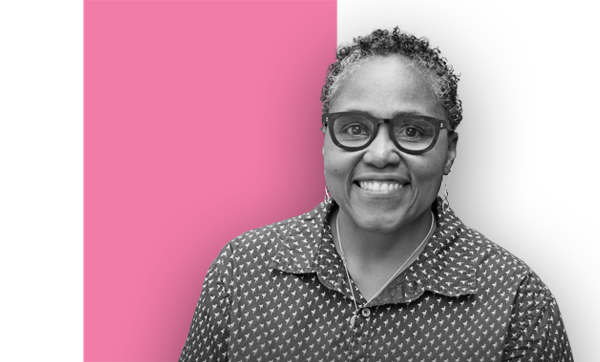What’s Next for Biostatistics?
What’s Next for Biostatistics?
In the third segment of our “What’s Next for Health” series, Scarlett Bellamy, chair and professor of biostatistics, discusses innovation and inclusion in the field.

A time of immense change
I believe biostatistics is at a tremendously exciting time. The volume of data that is currently being produced, both actively and passively, is beyond what many of us could have ever imagined.
For example, most of us are passively generating data that is being captured by smart devices that are rarely unattached from (or far from) our bodies, every minute of every day. The potential to use these data to understand and improve health is enormous. However, those data are not being generated for the expressed purpose of “studying health.” As biostatisticians, we must temper our excitement with that acknowledgement.
The challenges and opportunities
The opportunities for biostatistics are endless and generally fall under the framing of “discovery for the good of the health of the world.” A recent example includes the CDC-funded, Center for Advanced Epidemic Analytics and Predictive Modeling Technology (EPISTORM) where investigators will use wastewater surveillance, artificial intelligence, and other tools to develop forecasting models to predict potential outbreaks before they occur. This will provide public health systems lead time to prepare. BUSPH faculty have long been associated with ongoing research projects and centers including the Boston Providence Center for AIDS Research as well as the Framingham Heart Study.
A perennial challenge for biostatisticians is our openness and willingness to critically interrogate the data-generating process into our approaches for data analysis. I think that we have improved at engaging in this exercise in many ways; now we should expand that exercise to think critically through larger, everyday systems. The way in which structures that individuals engage in their everyday lives have been, and are organized, can perpetuate disparities in so-called “objective” measures of health. Grappling with this and my earlier points that while data may be voluminous, many sources that are generating these vast repositories were never intended to do so for the purpose of health research. While this “signal to noise” challenge is not new, the scale has changed and continues to grow exponentially. Optimist that I am, I believe that these challenges represent opportunities for our field to grow and have an impact in domains that we have not in the past.
I believe that broader representation dramatically increases the potential to do better science.
Considerations for schools and programs of public health
Biostatisticians are natural collaborators and have long enjoyed opportunities to rigorously apply statistical design and analysis concepts to important public health problems. We need to expand these principles to embrace other technical disciplines—computer science, data science, computational biology, etc.—to leverage the greatest potential to learn from data, including “big data.” At BUSPH, we have been very active in this arena. Some examples include the recently launched Population Health Data Science Program, led by Drs. Debbie Cheng and Laura White and collaborations with the Rafik B. Hariri Institute for Computing and Computational Science & Engineering.
Public health should continue to explore ways to invite new talent into our field, in order to keep pushing the boundaries of innovation. A persistent challenge in biostatistics has long been representation and diversity. Arguments for increasing diversity are often under the context of benevolence. Yes, it is “the right thing to do,” but that is not the only reason why diversity is essential for biostatistics. I believe that broader representation dramatically increases the potential to do better science.
Most recently, this came into sharp focus during the summer of 2020. While significant progress has been made, there remains groups that are persistently under-represented in biostatistics and science writ large. This limits how we approach and propose solutions to the critical problems of our time, stifling innovation. How we continue moving forward, especially in light of recent Supreme Court rulings, will be challenging. While it is laudable to make authentic efforts to invite more voices and viewpoints into the field, equally important is creating welcoming spaces for those voices to be integrated into our communities for maximal impact. We must always be thinking about how inclusive our spaces are and continually ensuring that those spaces support everyone to be themselves wholly, in order to thrive.
Of course this is simultaneously easy to say and difficult to do, but it is critical to innovation. My mission is to leave my profession better than I found it. That continually guides my own journey and how I think about sustaining and building our BUSPH biostatistics community.
